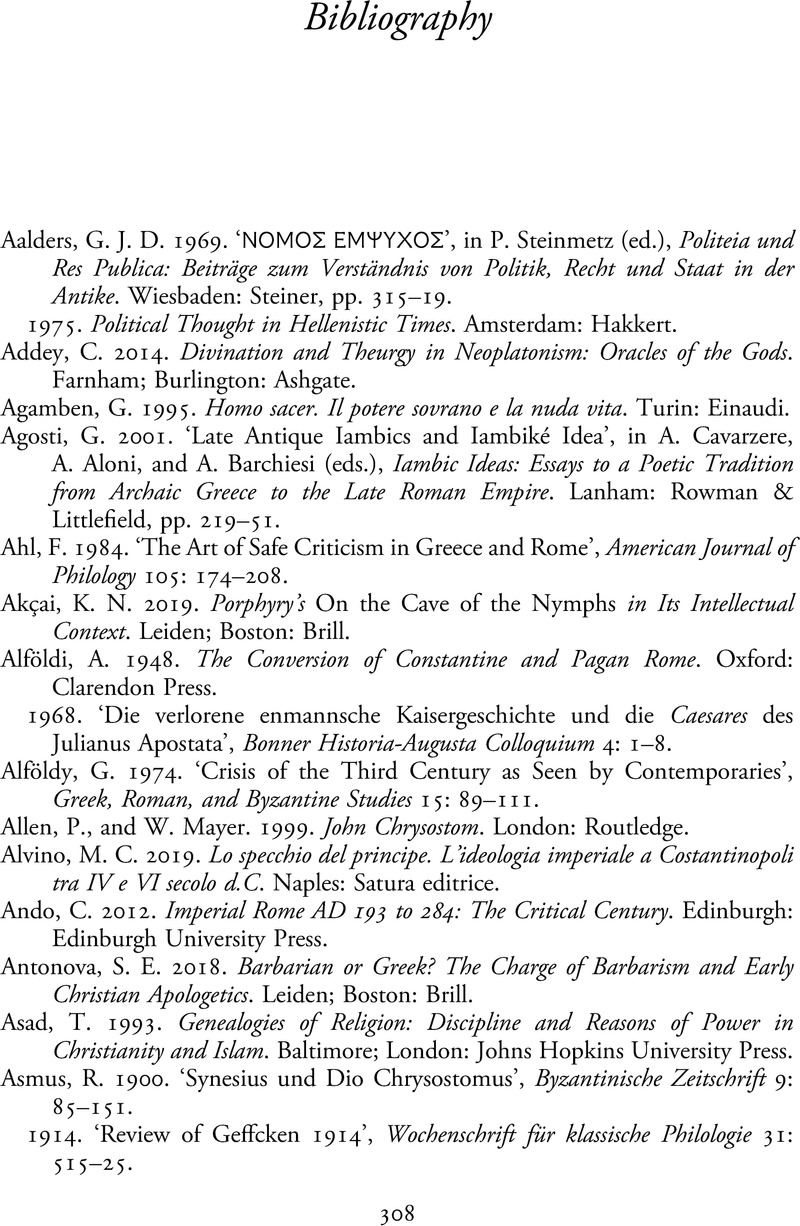 Christianity, Philosophy, and Roman Power
Christianity, Philosophy, and Roman Power Book contents
- Christianity, Philosophy, and Roman Power
- Greek Culture in the Roman World
- Christianity, Philosophy, and Roman Power
- Copyright page
- Dedication
- Epigraph
- Contents
- Figures
- Preface
- Acknowledgements
- Abbreviations, Editions, and Translations
- Introduction
- Part I At Constantius’ Court: Julian Caesar
- Part II Making and Breaking Constantine: Julian Augustus
- Part III After Julian: Philosophy in the World
- Conclusions
- Bibliography
- Subject index
- Index Locorum
- References
Bibliography
Published online by Cambridge University Press: 07 July 2023
- Christianity, Philosophy, and Roman Power
- Greek Culture in the Roman World
- Christianity, Philosophy, and Roman Power
- Copyright page
- Dedication
- Epigraph
- Contents
- Figures
- Preface
- Acknowledgements
- Abbreviations, Editions, and Translations
- Introduction
- Part I At Constantius’ Court: Julian Caesar
- Part II Making and Breaking Constantine: Julian Augustus
- Part III After Julian: Philosophy in the World
- Conclusions
- Bibliography
- Subject index
- Index Locorum
- References
Summary

- Type
- Chapter
- Information
- Christianity, Philosophy, and Roman PowerConstantine, Julian, and the Bishops on Exegesis and Empire, pp. 308 - 344Publisher: Cambridge University PressPrint publication year: 2023


